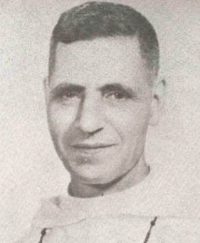The advance troops of the liberators entered Manila last night after thirty-seven long months since the remaining troops of the USAFFE retreated to Bataan. We cannot tell how many districts of Manila are already liberated. News dispatches are a little confused. All we are sure of is that the first place recaptured is the University of Santo Tomas with all its residents, priests and internees. We were told that the rest of the city had been turned into a battlefield, won not amidst psalms and cheers but amidst firings and shellings “…that this city and all its people might be protected…”
The conquest of the Central Plain of Luzon was a successful one. The 210 kilometers between the Gulf of Lingayen and the City of Manila were negotiated in 27 hours instead of 27 days. Except in Bamban and Stotsenberg where the enemy had attacked from the nearby hills, the Yankee war machinery rolled through the wide open fields without opposition.
The enemy had lost the battle of Luzon when it allowed the gigantic invading equipment to land unopposed. In the open fields, the Japanese could not put up a fight. They preferred to retreat in disarray, dispersed like scared rabbits as the mechanized columns of the invaders rolled by. Yamashita’s strategy was to convert the mountain ranges of Caraballo and Zambales into another Bataan, in the manner of MacArthur’s defense three years ago. The Imperial Army was entrenched in the rugged mountains without roads and almost without any footpaths, turning each mountain into a fortress, each hill into a machinegun nest and each cliff into a trench. They dug a complex of tunnels of communications through the mountain where they hid and installed their artillery. They fired from the mouths of the tunnel to avoid being localized by the American Air Force and artillery. The Americans had to destroy these subterranean hideouts one by one. Not only did they blow up these artillery nests. They chased those who manned the guns and flushed the others out of the caves and tunnels who defended themselves like corralled beasts.
Under this mode of defense, it was not necessary to launch big battles nor heavy attacks nor fighting on a grand scale, nor mechanized campaigns. It was a work of mopping up, a fight of a group of hunters against a group of game animals. The air force, the tanks and armoured cars were hardly of any use. Only the rifles, flame throwers and hand grenades were effectively utilized. It was a slow, tedious, lousy and bloody fight.
